Florian Neufeldt
05.12.2018 – 15.02.2019
Exhibition Views
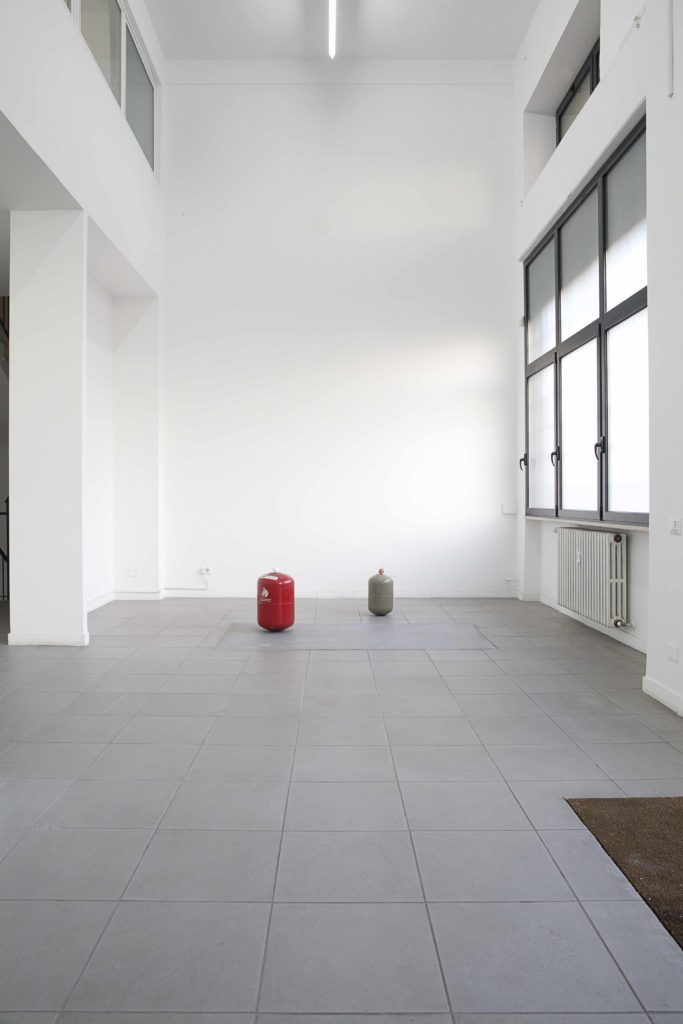
Sealed Vessels, 2018, exhibition view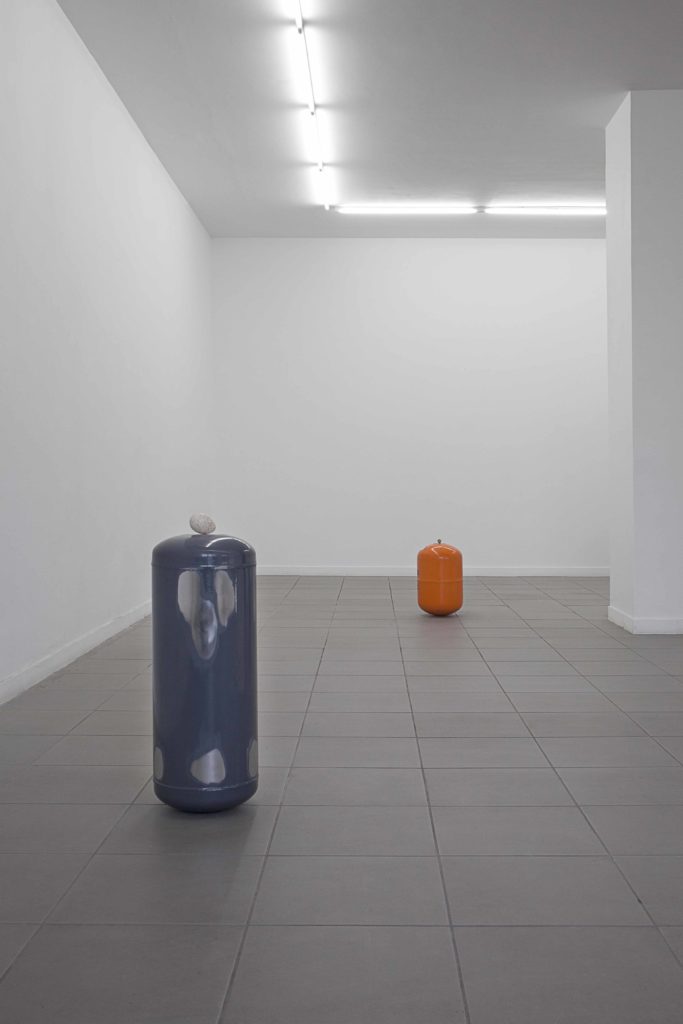
Sealed Vessels, 2018, exhibition view 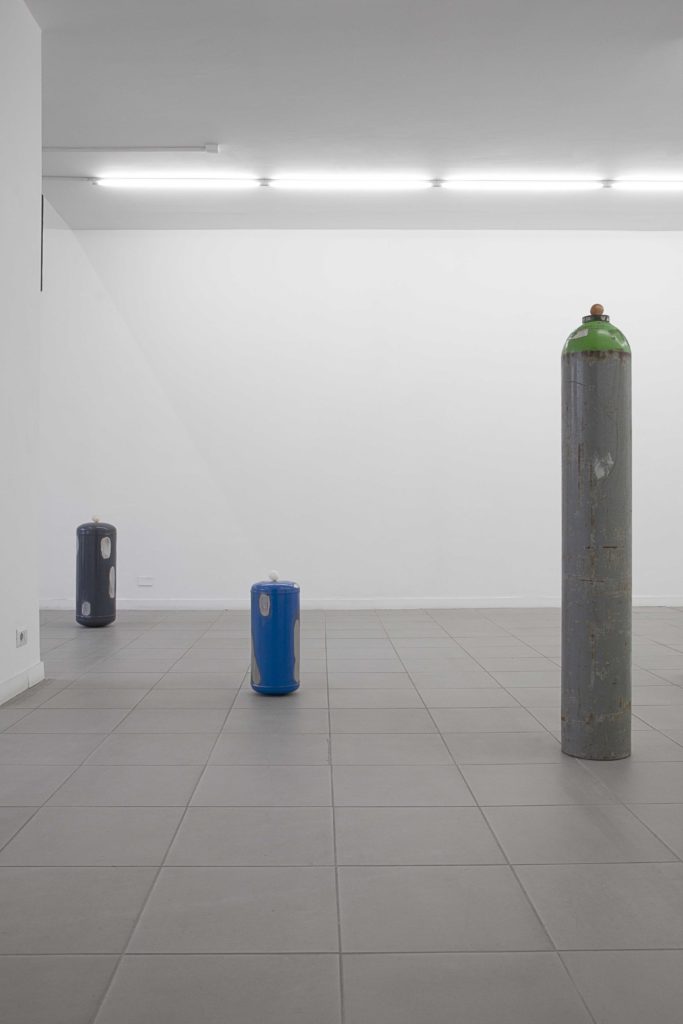
Sealed Vessels, 2018, exhibition view 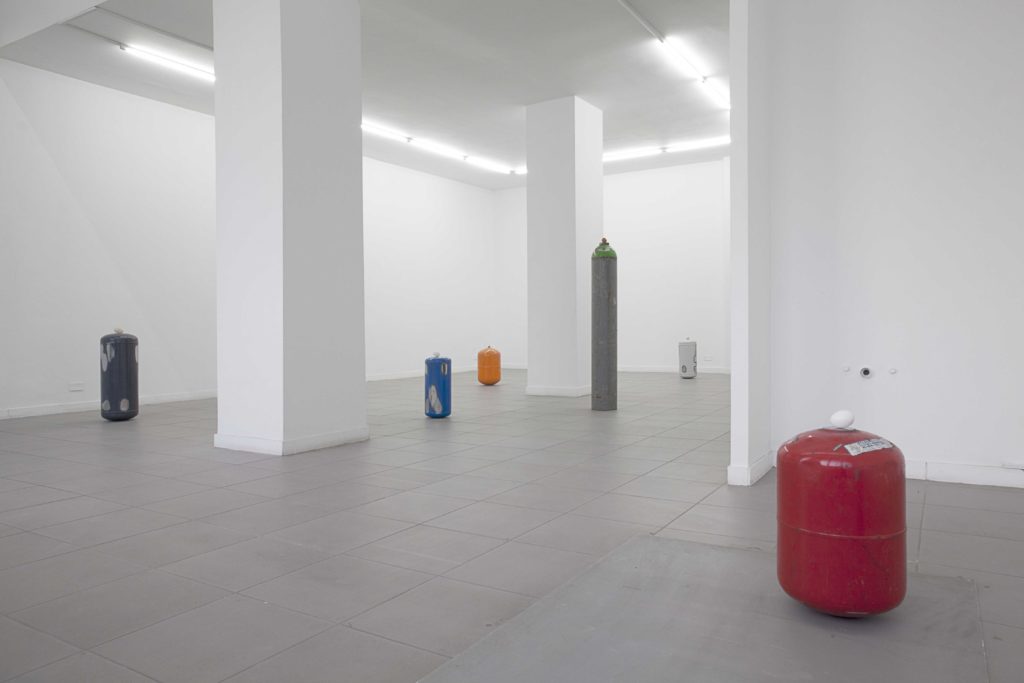
Sealed Vessels, 2018, exhibition view 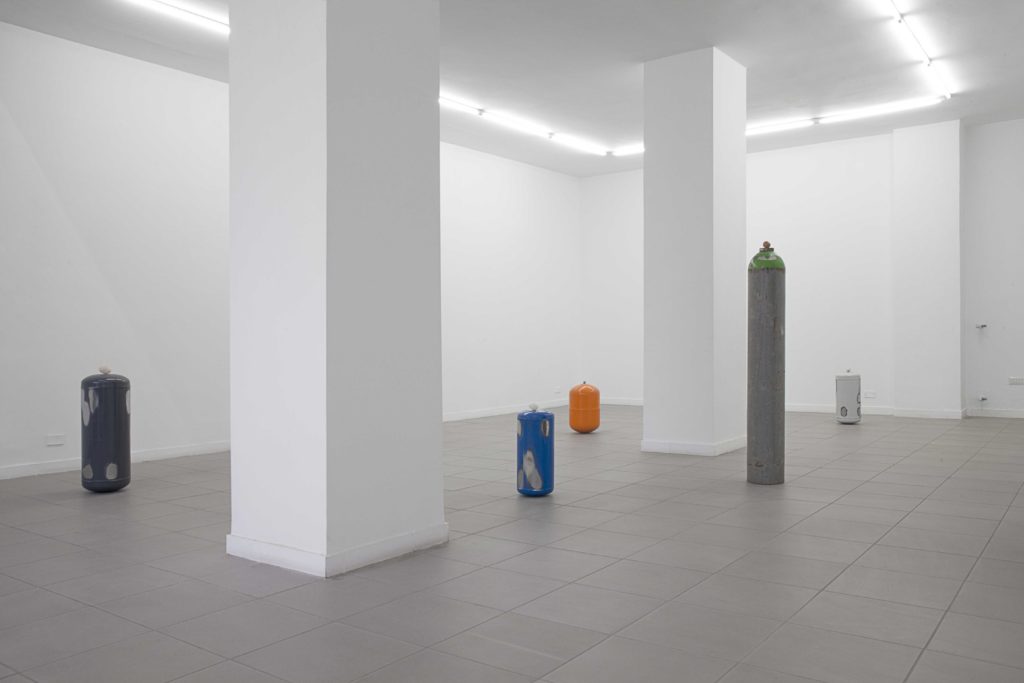
Sealed Vessels, 2018, exhibition view 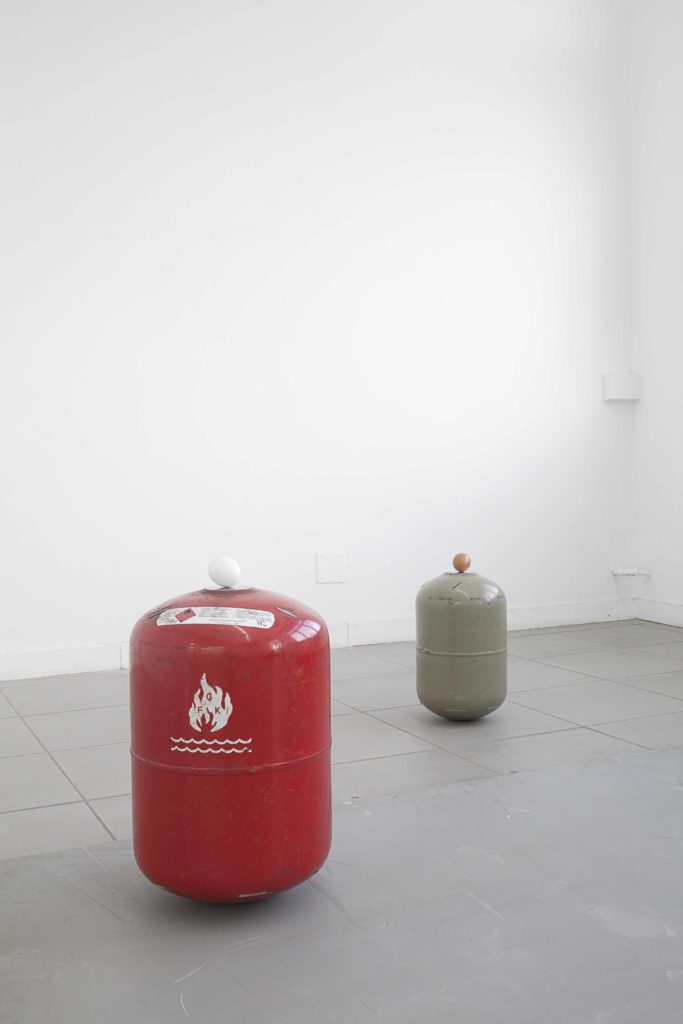
Sealed Vessels, 2018, exhibition view 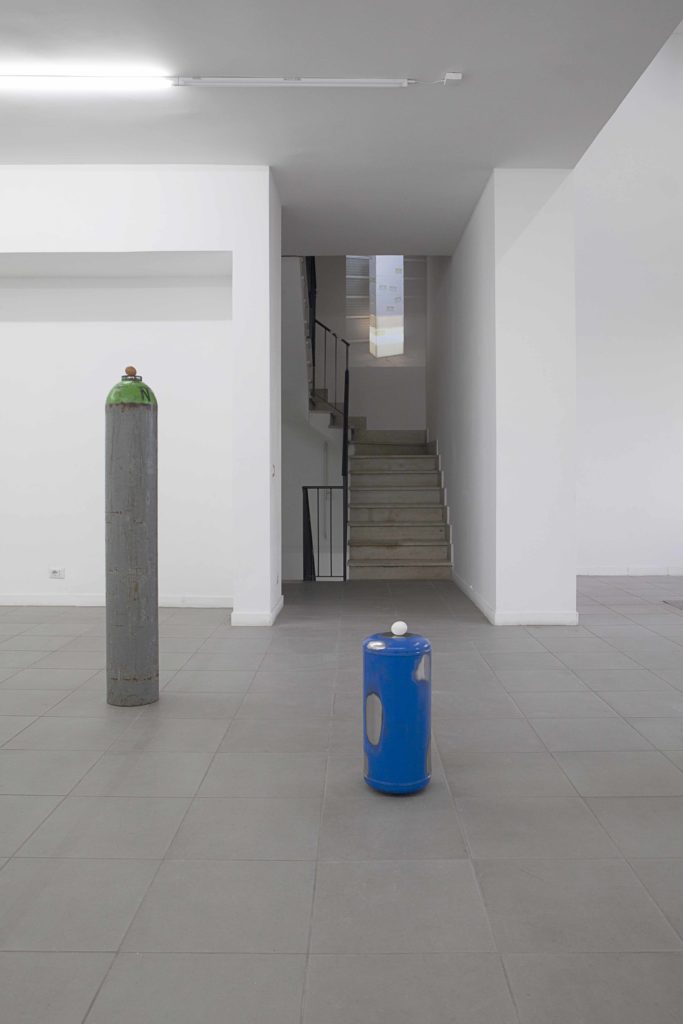
Sealed Vessels, 2018, exhibition view 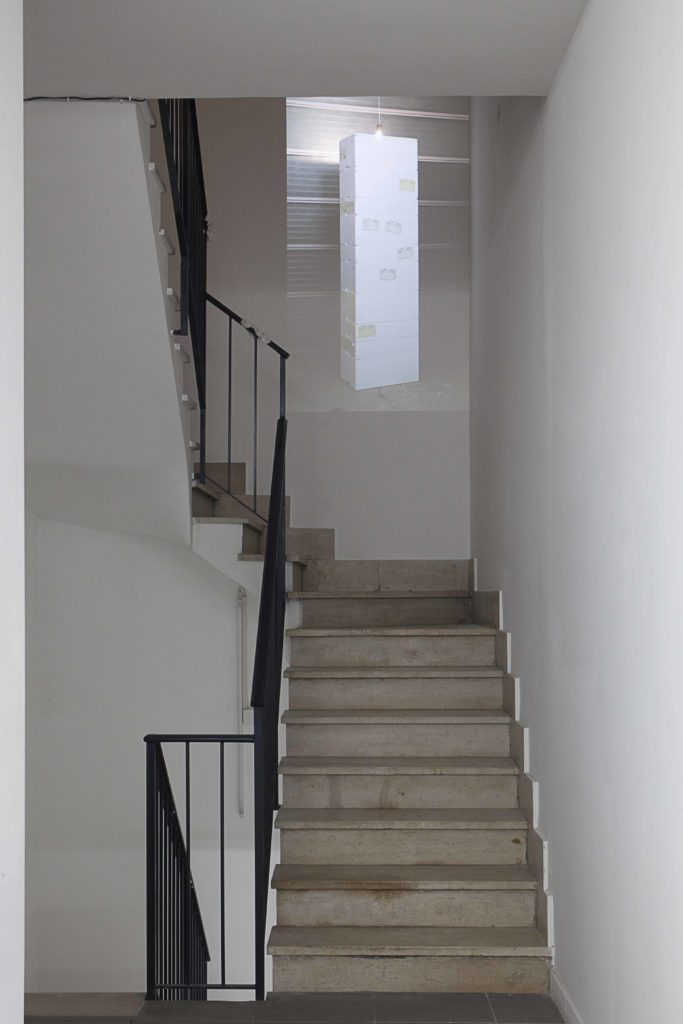
Sealed Vessels, 2018, exhibition view 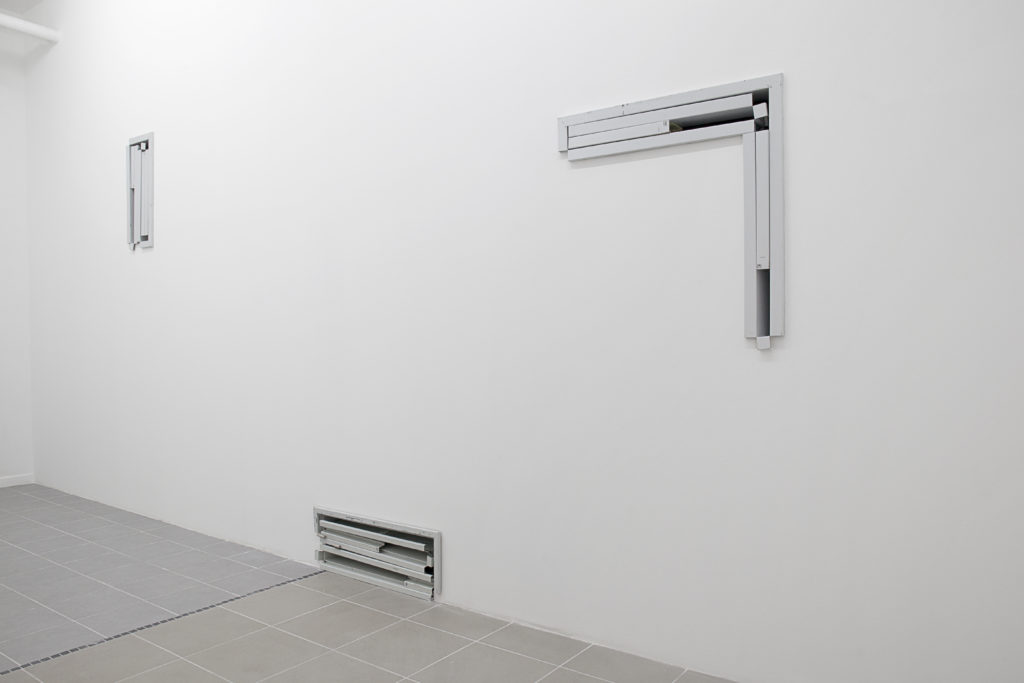
Sealed Vessels, 2018, exhibition view 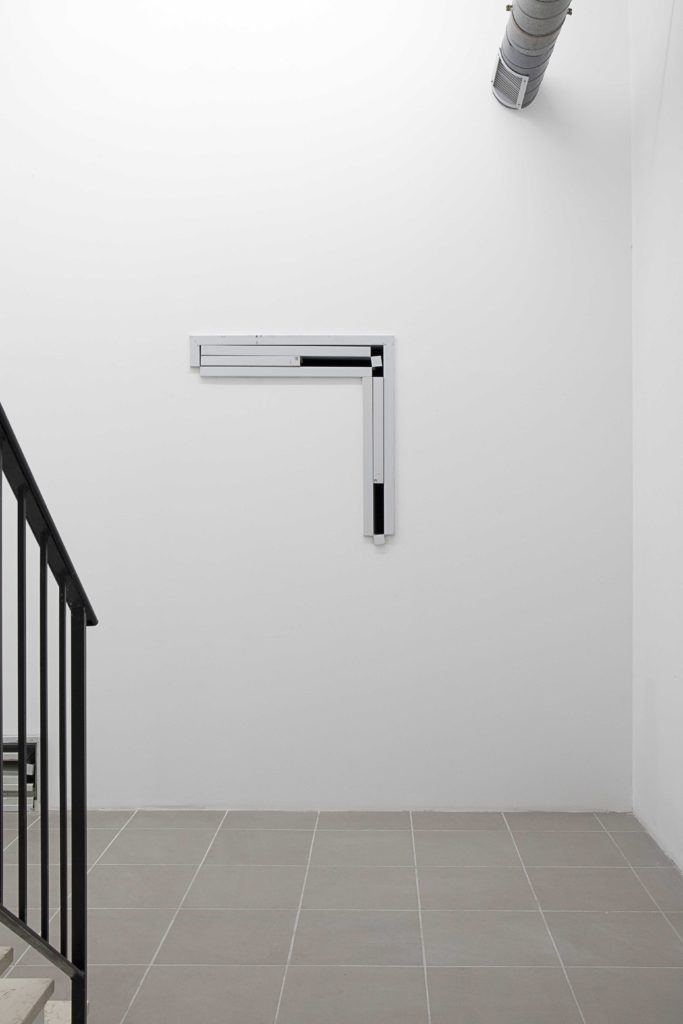
Sealed Vessels, 2018, exhibition view
Works
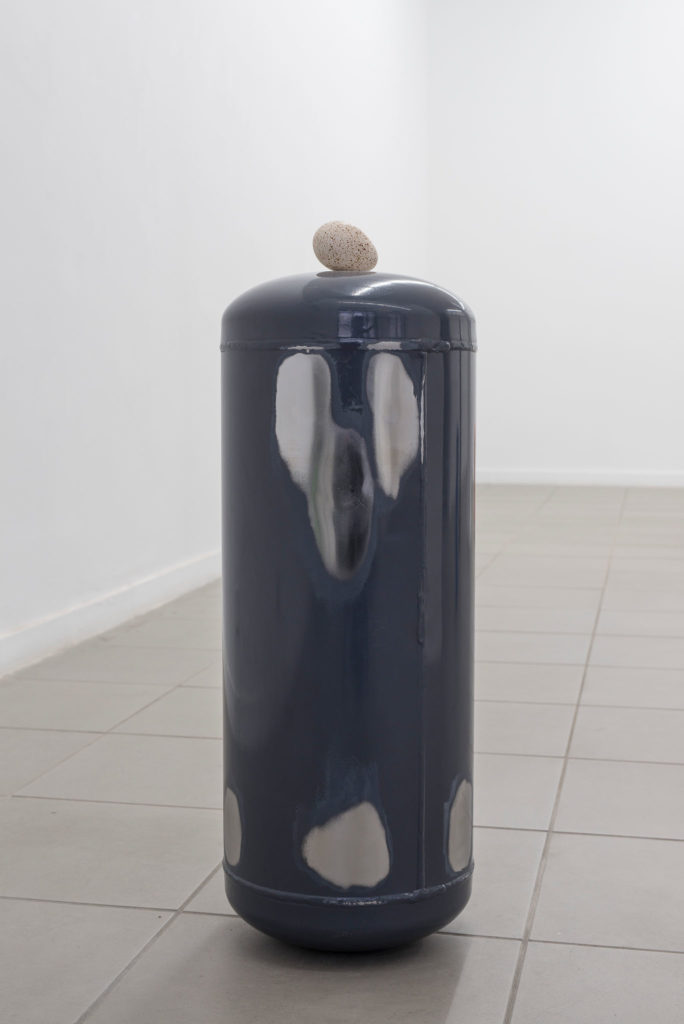
Sealed Vessels, 2018, expansion vessel (dark grey), turkey egg, 73 x 28 x 28 cm, photo by Giorgio Benni
Sealed Vessels, 2018, gas bottle (orange), quail egg, 48 x 29 x 29 cm, photo by Giorgio Benni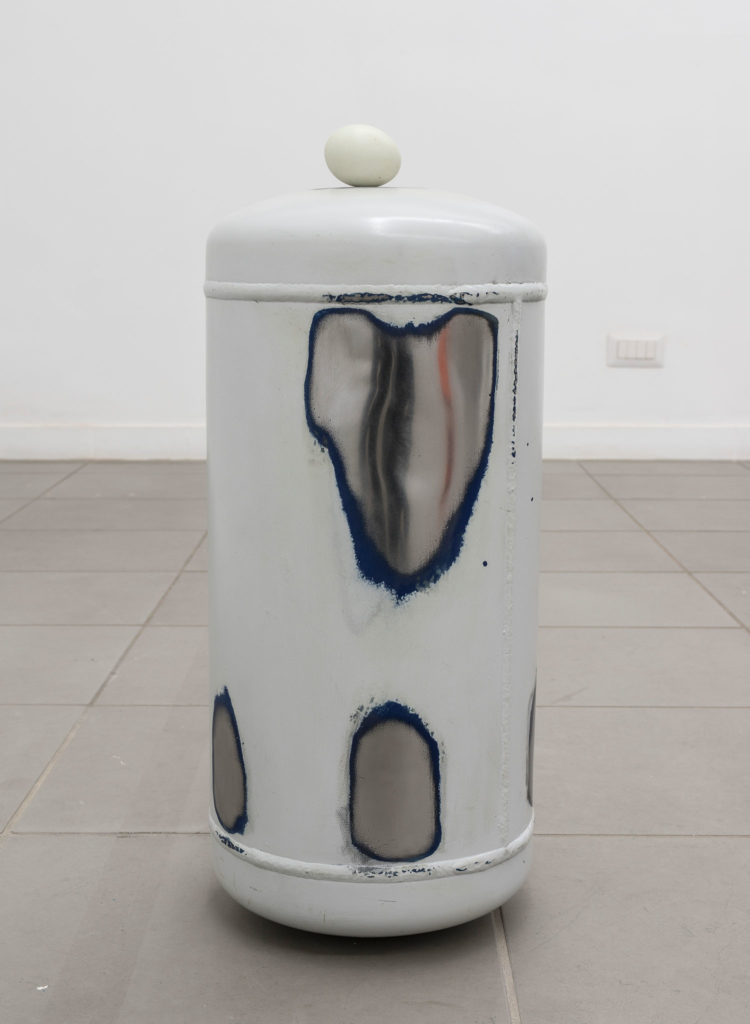
Sealed Vessels, 2018, expansion vessel (white), chicken egg, 50 x 22 x 22 cm, photo by Giorgio Benni
Sealed Vessels, 2018, expansion vessel sky (blue), chicken egg, 50 x 22 x 22 cm, photo by Giorgio Benni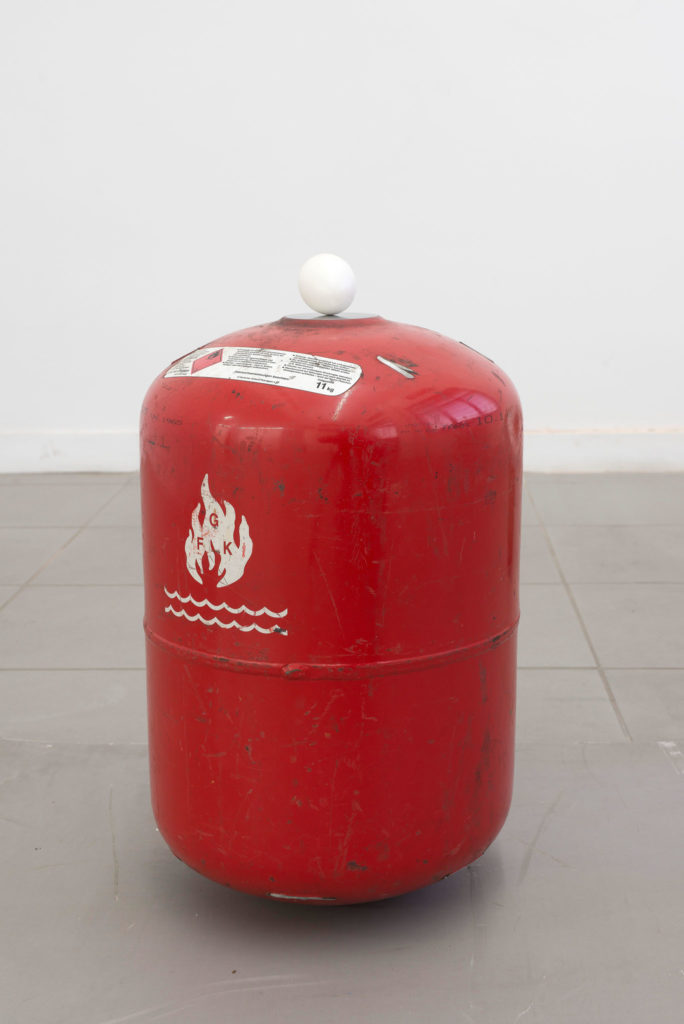
Sealed Vessels, 2018, gas bottle (red), chicken egg, 48x29x29 cm, photo by Giorgio Benni
Sealed Vessels, 2018, gas bottle (grey), chicken egg, 22 x 36 x 36 cm, photo by Giorgio Benni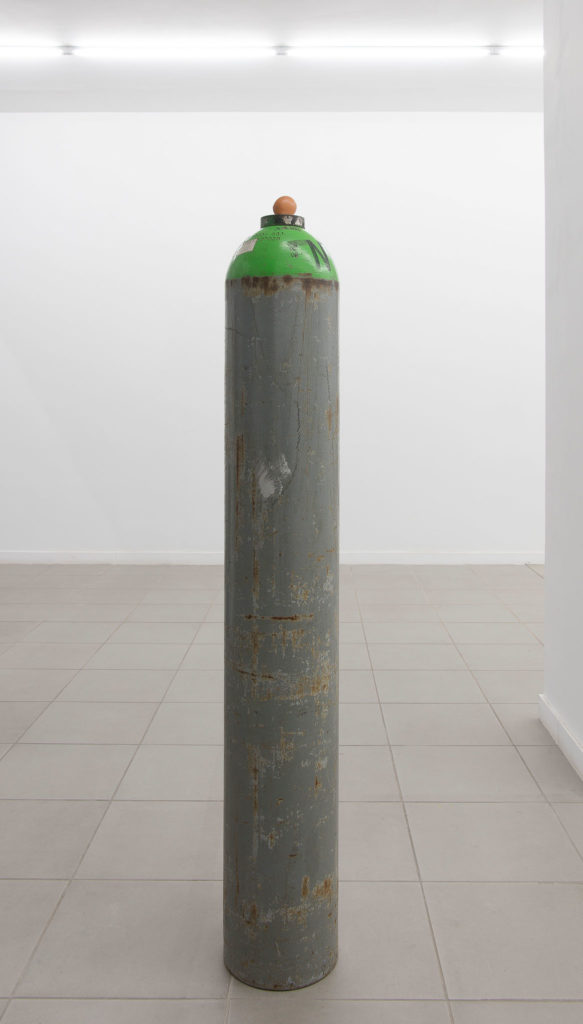
Sealed Vessels, 2018, protective gas bottle (grey), chicken egg, 148x23x23 cm, photo by Giorgio Benni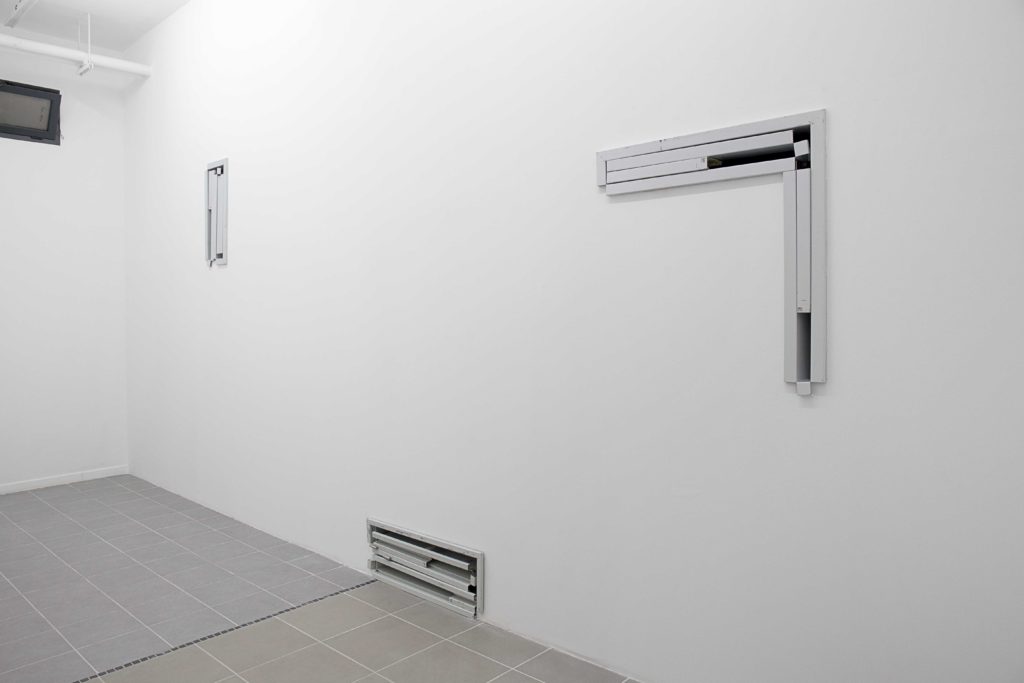
Frames, 2018, environmental dimensions, installation view, photo by Giorgio Benni
Frames, 2018, environmental dimensions, installation view, photo by Giorgio Benni 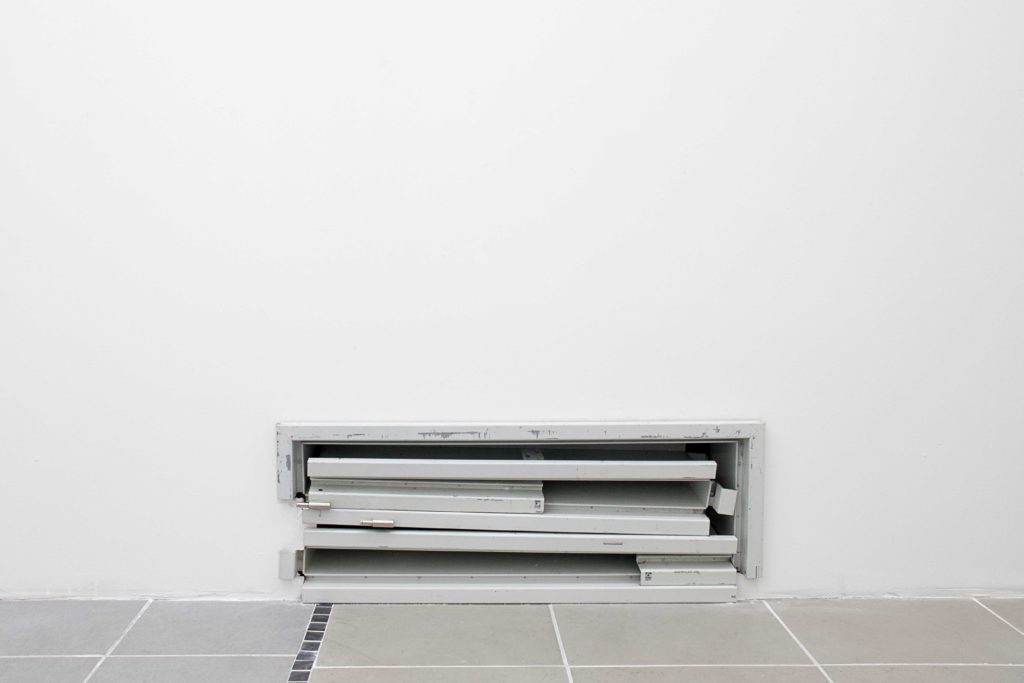
Frames, 2018, environmental dimensions, installation view, photo by Giorgio Benni 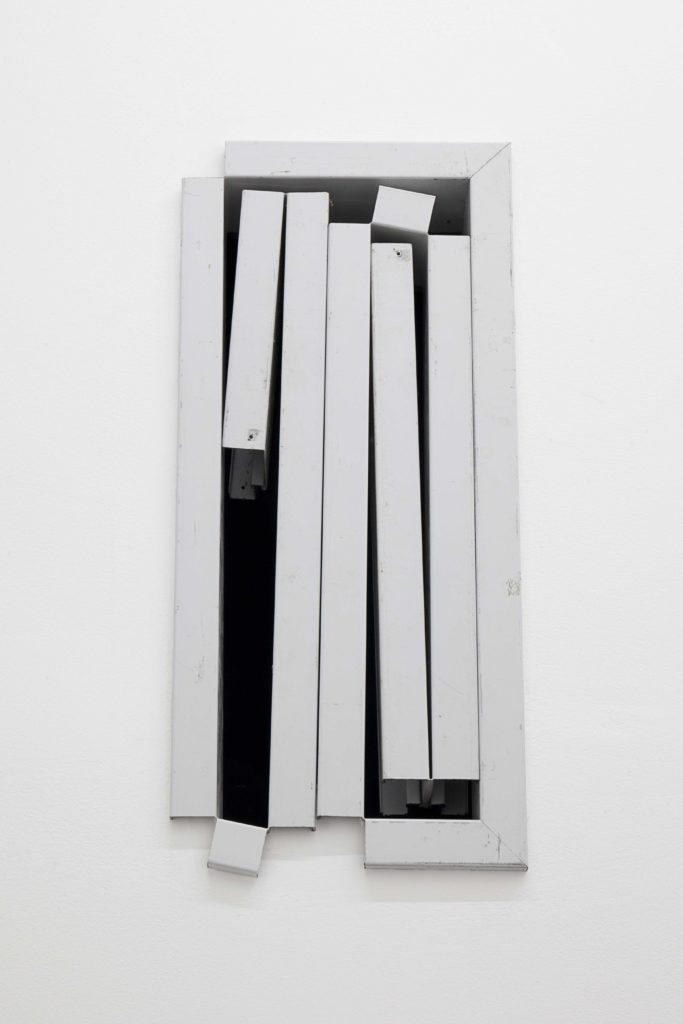
Frames, 2018, environmental dimensions, installation view, photo by Giorgio Benni 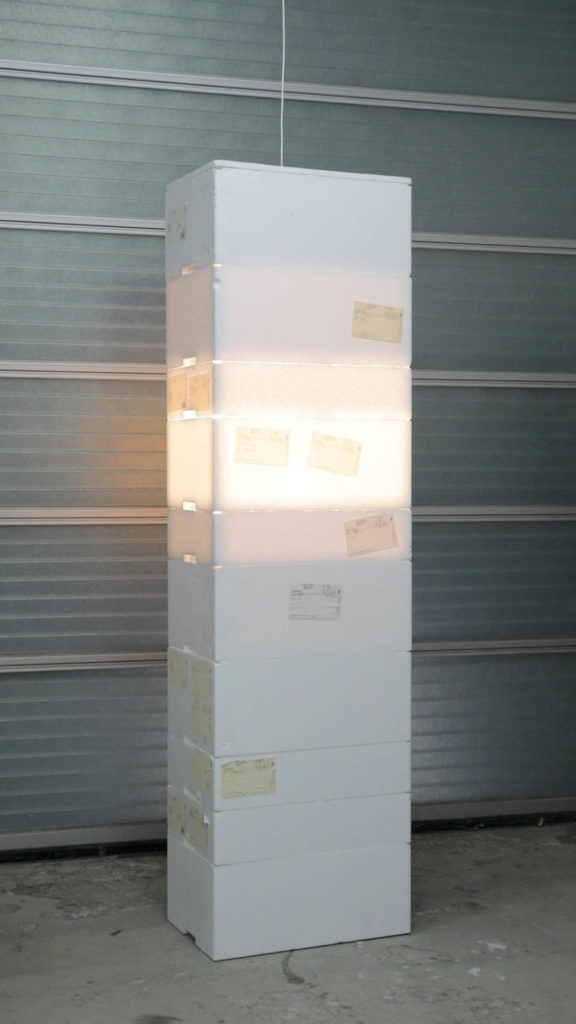
Deep fisher, 2018,16.9 video, single channel, color, sound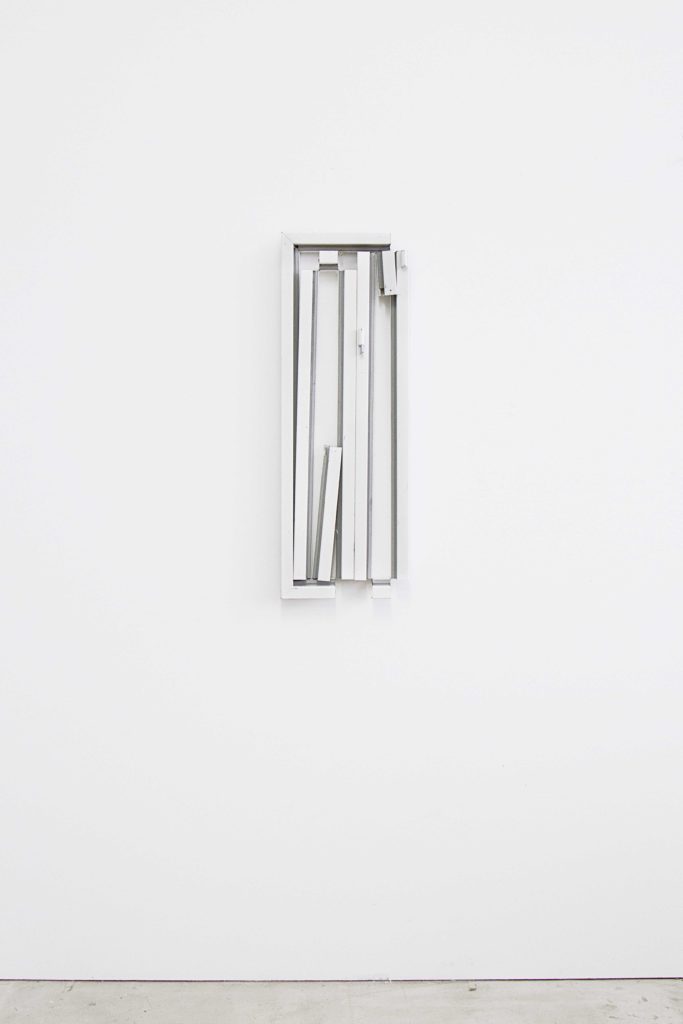
Frames, 2018, environmental dimensions, 90×31, 8×6 cm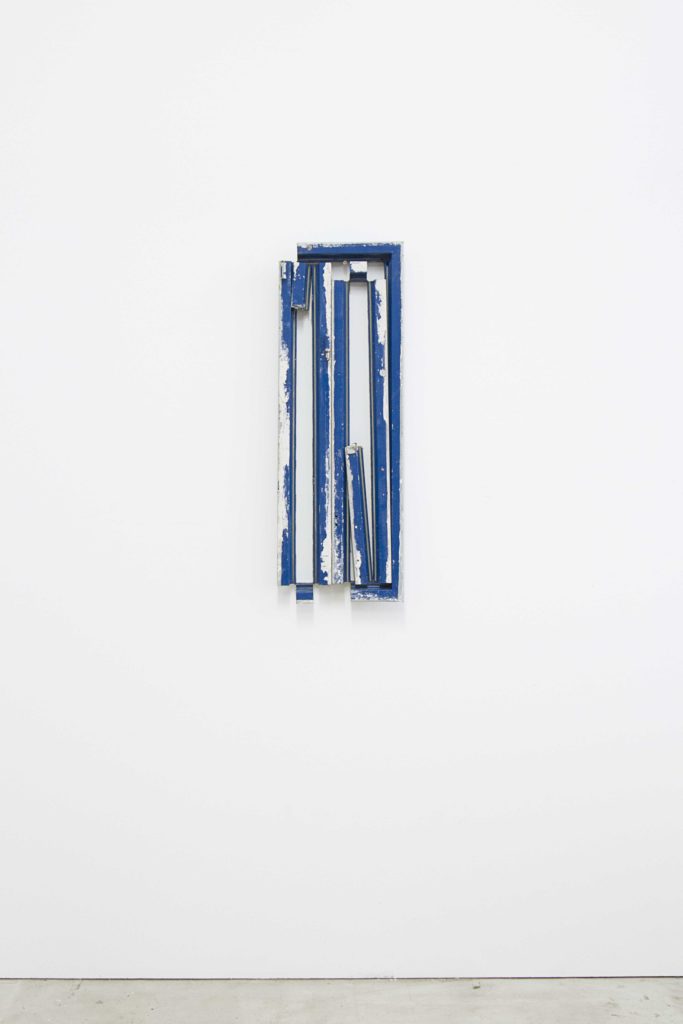
Frames, 2018, environmental dimensions, 90×31, 8×6 cm
The Gallery Apart is proud to present Sealed Vessels, the fourth solo show hosted in the gallery’s spaces by Florian Neufeldt (1976), a German artist based in Berlin.
Committed to relate his sculptural practice to the spaces and architectures hosting his works, Neufeldt further develops the central theme by making the exhibition space the content of his art and assigning the role of container not only to the gallery’s structure as such, but also to the objects found, which the artist usually selects and forges for the purpose of his formal research.
The show Sealed Vessels deals with containers in a broader sense. Since the early beginnings of humanity and its culture containers in every form, size, and functional purpose have played a crucial role in managing the daily life and survival. Be it caves as shelters, holes for storage or bowls to drink water. All these containers haven’t lost any significance and can be seen as one of the grounds our civilization is based upon.
Humans have oftentimes drawn inspiration from nature, trying to copy it and its seemingly perfect models. One of these natural products is the egg whose extraordinary qualities have inspired all kinds of objects, architectures and more or less scientific theories. Even more than these theories, though, it is the religion in various forms which has incorporated the egg as a symbolic form and created an aura still gleaming.
So if the egg as a container obviously evokes a content involving life and therefore high and auratic categories and principles, the industrial reality and mass-production mostly succeeds in disposing this aura. The title giving series Sealed Vessels contrasts eggs with human-made industrial metal containers featuring quite similar shapes. Reduced to their basic forms, with all attachments cut off and the openings sealed through welding, these standard containers for gases and liquids serve as a pedestal for the natural paradigm (the egg) which, regarding its strangely balanced position on the metal containers, might seem somehow attached to its epigone.
However, it is in the basement of the gallery that Neufeldt leads to extreme consequences the short circuit between content and container, between form and void. The space accessible to the viewer is drastically reduced due to the unexpected presence of a previously non-existent wall, which, on the one hand, compresses the exhibition space imposing a claustrophobic approach to the visit; on the other hand, it is presented as a container (once again) of artworks embedded in the wall and, finally, it inevitably evokes the presence of a larger space that, beyond the wall itself, suggests to the imagination about a huge void.
To round off the exhibit there is a video that, once again, highlights the unique approach of Neufeldt to the medium, already used on other events but always with a sculptural approach, aimed at exploiting with simplicity and, at the same time, with depth the predisposition of the moving image to fathom any possible relationship between the object and the surrounding space.
The Gallery Apart è orgogliosa di presentare Sealed Vessels, la quarta personale in galleria di Florian Neufeldt (1976), artista tedesco di stanza a Berlino.
Impegnato a relazionare la propria pratica scultorea con gli spazi e le architetture atte a ricevere le sue opere, Neufeldt approfondisce ulteriormente il tema facendo dello spazio il contenuto della sua arte e assegnando il ruolo di contenitore non solo alla struttura della galleria in quanto tale ma anche agli oggetti trovati, che l’artista abitualmente seleziona e piega ai fini della sua ricerca formale.
La mostra Sealed Vessels fa riferimento ai contenitori in senso lato. Fin dagli albori dell’umanità e della sua evoluzione culturale i contenitori di qualunque forma, dimensione e destinazione funzionale hanno giocato un ruolo cruciale nella gestione della vita quotidiana e ai fini della sopravvivenza. Dalle caverne utilizzate come rifugi dagli uomini primitivi ai vasi per contenere derrate alimentari, acqua o altri liquidi, l’importanza dei contenitori non è mai venuta meno ed essi possono essere visti come una delle basi su cui si fonda la nostra civiltà.
L’uomo ha spesso tratto spunto dalla natura, tentando di copiarla nei suoi modelli apparentemente perfetti. Uno di questi prodotti naturali è l’uovo le cui straordinarie qualità hanno ispirato una moltitudine di oggetti, architetture e teorie più o meno scientifiche. Ancor più di queste teorie è la religione nelle sue varie manifestazioni ad avere introiettato l’uovo come forma simbolica assegnandogli un’aura ancora brillante.
Se l’uovo come contenitore evoca naturalmente un contenuto che attiene alla vita e dunque a categorie e principi alti e auratici, la realtà industriale e la produzione di massa riescono per lo più a sminuire quest’aura. La serie di sculture intitolate Sealed Vessels mette a confronto le uova con contenitori industriali metallici creati dall’uomo che assumono una forma abbastanza simile. Ridotti alle loro forme di base, con tutti gli accessori eliminati e le aperture sigillate mediante saldatura, questi contenitori standard per gas e liquidi fungono da piedistallo per il paradigma naturale (l’uovo) che, per quanto riguarda la sua posizione stranamente bilanciata sui contenitori metallici, potrebbe sembrare in qualche modo attaccato al suo epigono.
Ma è nel basement della galleria che Neufeldt porta ad estreme conseguenze il corto circuito tra contenuto e contenitore, tra forma e vuoto. Lo spazio agibile da parte dello spettatore viene radicalmente ridotto a causa dell’inopinata presenza di un muro prima inesistente, che da una parte strizza lo spazio espositivo imponendo un approccio claustrofobico alla visita, dall’altra si propone come contenitore (di nuovo) di opere questa volta incastonate nella parete e, infine, evoca inevitabilmente la presenza di uno spazio ben più grande che, oltre la parete stessa, propone all’immaginazione un grande vuoto.
Completa la mostra un video che ancora una volta evidenzia la particolare attitudine di Neufeldt al mezzo, già utilizzato in altre occasioni ma sempre con un approccio scultoreo, volto a sfruttare con semplicità e nel contempo con profondità la predisposizione dell’immagine in movimento a scandagliare ogni possibile relazione tra oggetto e spazio circostante.
share on